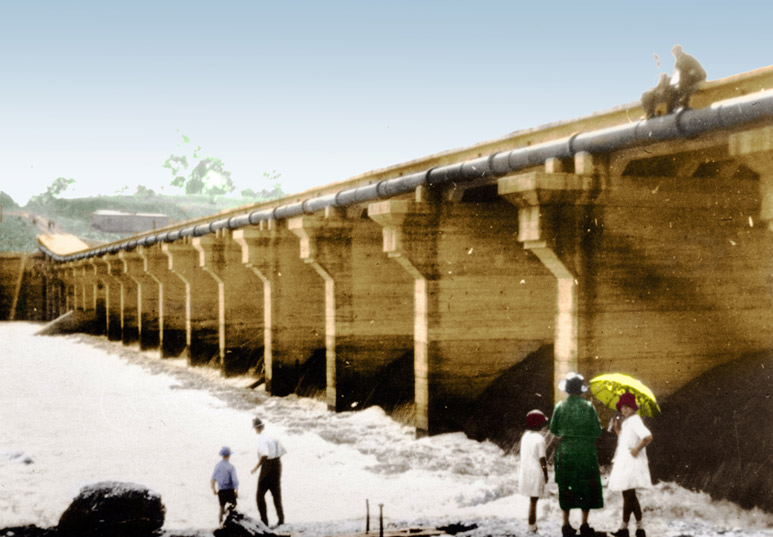Flashback Fridays: Subsidies

Until 1932 the State funded development of infrastructure and then created a loan which was transferred to local authorities.
The first subsidy scheme was introduced in 1932 to stimulate employment during the Depression and lasted for 10 years providing subsidies of up to 50% of capital costs. During this period, the local authorities’ technical and political prowess in attracting subsidies must have become an important factor in the development of the urban water industry.
Growth in water infrastructure was not large at this time as more attention and investment was being directed to irrigation and groundwater supplies which increased rapidly in the first part of the 20th century.
Urban water supplies (let alone sewerage, although Brisbane and Toowoomba commenced sewering urbanised areas during this period) received relatively little attention, but this was about to change.
The subsidy scheme ceased briefly during World War Two but returned straight afterwards when a strong emphasis was placed on building water supplies both for urban supply and for irrigation. Subsidies of between 15 and 50% of expenditure were provided for a range of capital projects across the State, but water and sewerage received the lion’s share. Powell (1991) reports that water and sewerage comprised between 60 and 70% of the funding allocated up to the 1960s. Investment in urban (and agricultural) water infrastructure during this period represented a significant proportion of the State’s budget.
The subsidy scheme was restructured in 1969 so that throughout the 1970s less than 50% of costs were allocated for new schemes and less than 33% for capital improvements and augmentations. Spending was still significant but this was also a period of intense dam building for the Water Resources Commission.
The subsidy scheme was reduced in 1981 and again in 1985 “but legislation was introduced to give [the councils] the power to obtain capital contributions from developers towards the cost of all major improvements to the supply system” (Powell, 1991).
Increasing costs of new capital and loan repayments as interest rates skyrocketed began to encourage a greater emphasis on demand management and deferring new infrastructure.
However, investment continued and indeed “for Australia as a whole, public expenditure on water and water related services reached a post-war peak in the mid-1970s, then declined to a level commensurate with 1960s expenditures in the early 1980s. The combined interest bill on external borrowings had imposed a frightful burden on the major water authorities – more than 40% of their income was required to meet debt financing.” (Powell, 1991)
The increasing debt across both Local and State Government and a policy shift to a stronger focus on private investment in public infrastructure eventually led to reduction in subsidy schemes. In 2006 Pigram complained that “even today, large and small communities expect and lobby for governmentsubsidised water supply schemes. The assumption that public expenditure will be readily available to correct water deficiencies has become well entrenched.”
In 2009, coordinated water and sewerage subsidies in Queensland came to an abrupt end. Funding was withdrawn with little notice and was even “clawed back” from some councils.
The method of this sudden change in Queensland policy was not well received, but has led to service providers focussing on being more self-sufficient.
Unfortunately though, many of Queensland’s small and remote communities cannot afford cost-recovery rates for water and sewerage services and in some towns, shrinking populations and excess capitalisation has raised expectations and created infrastructure that is impossible for the communities to maintain, let alone replace.
Determining how the State and local communities can work together to support small and remote communities is one of the most pressing challenges for the future of the Queensland’s urban water industry.
Image: Mt Crosby Weir, circa 1930s
Back to list